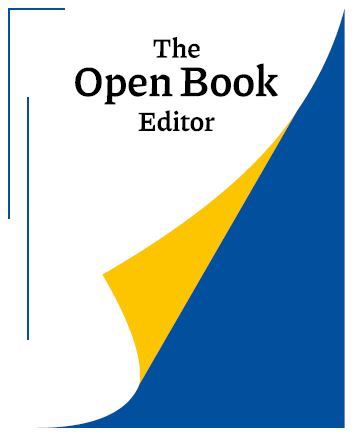Weeks, months, and years of work later and you’ve finally finished the first draft of your novel. Congratulations! Take a moment to celebrate, because finishing your first draft is a huge accomplishment.
However, typing The End doesn’t mean you’ve reached the finish line just yet. So, what happens next? Before you jump into editing your book, here are 8 things you can do after finishing the first draft of your novel.
1. Let the manuscript rest
You’re probably riding the high of having finished that first draft and may be tempted to jump right into revisions. Resist this temptation and instead put away your book. Whether you’re sick of your book after all those hours of work, or completely in love with it, you’re too close to your manuscript to be able to edit objectively. You won’t be able to see its faults or know how to fix them.
Stephen King recommends setting aside a finished first draft for a minimum of six weeks. According to King, this allows your brain time to step away from the project, so you can come back to it with a fresh perspective. Not sure you can edit objectively even after a six-week resting period? Find beta readers or hire a book editor to get an outside perspective on your book.
2. Read books like yours

Writing a book can be an all-consuming process, and there isn’t always time to read other works that bear similarities to yours. The period after you’ve finished the first draft of your novel is the perfect time to seek out some great reading material.
Try to find books that are the same genre as your book and have been published in the last three years. It’s not only important to know what else is out there and what the current publishing trends are, but you’ll also want to source comp titles for when you start pitching your book to agents or publishers. Comparison titles help agents and publishers know what to expect from your novel and how best to market it.
3. Start a new project
It might sound crazy, but starting a new project is a great way to distance yourself from your finished first draft. Chances are, you learned a lot while writing the first draft of your novel, and you’ll be able to put that into practice with the next manuscript.
A daily writing habit is also important for all types of writers, whether you’re a plotter, pantser, or plantser. Starting a different project after you’ve finished the first draft of your current novel will give you something new to keep that writing habit going strong.
4. But not too soon…
You don’t want to risk burning out by jumping into a new project too soon. Writing breaks are healthy and good for your mental health, too. Anywhere from a few days to a couple of weeks is a good timeline for your mini writing vacation.
Use this time to treat yourself. Take bubble baths. Catch up on your TBR list. Binge a Netflix series. Simply put, let your brain unwind before you start a new project or begin thinking about the next steps for your finished first draft.
5. Find a writing group

If you haven’t done this already, take the time after you’ve finished the first draft of your novel to build a solid group of writing peers. This can be done online through the #WritingCommunity hashtag on Twitter, Instagram, and Facebook, or in person through sites like Meetup.
Don’t underestimate the importance of a writing group. Not only will they be your beta readers once you’re ready to edit your book and pass it on, but a writing group can provide support as you navigate the tricky waters of the publishing industry.
If you’re looking for extra support from industry experts, The Open Book Editor provides excellent author coaching. We can offer you writing advice, tips on editing your book, and insight into the different types of publication so you can find what works best for you.
6. Read it out loud
After you’ve let the finished first draft of your novel rest for a while, pick it up again and read it out loud. One editing tip from famous author Zadie Smith is to read your book the way an enemy would: with a critical eye.
Try to do this step in a new environment, away from your writing desk. Go into your garden or to the park or the beach, and just read. Don’t focus on the details and corrections just yet. Instead, try to read it like you would any other book. If you can’t resist the urge to make some notes as you go, just focus on what you’re thinking and feeling as a reader. Does a scene excite you or bore you? Do you find yourself reading every word or do you skip over large chunks of description?
7. Set your editing goals
Your finished first draft will undergo many rounds of editing before it’s ready for agents, publishers, or self-publishing. This may sound intimidating but setting small achievable editing goals will help it seem less so.
Create a timeline for when you’d like to hit certain editing markers. One good goal is to edit one chapter a day. Maybe set a date for when you’ll send your edited manuscript off to your beta readers. Remember to be flexible and realistic about these goals. Don’t get discouraged if your beta readers take longer than expected to read your book, or if you don’t hit your daily editing goals. The editing process is fluid and always changing!
8. Leverage your expectations

Jodi Picoult said: “You can always edit a bad page. You can’t edit a blank page.” This is important to keep in mind when you start reading your manuscript after letting it rest for a while. There will inevitably be days where you don’t like what you wrote, but that’s what the editing process is for: to make your finished first draft better!
All authors, even well-known ones, must edit their work extensively before it’s ever printed. Ernest Hemingway famously rewrote the ending of A Farewell to Arms 39 times before he felt it was right! Be critical of your work, but also be kind to yourself. If the greats struggle at times to like what they write, you will too. But remember, you can always fix a bad page in the editing process.
Do what works for you
Every writer is different, so don’t feel you need to adhere strictly to these eight steps. Mould them to fit your personal style and needs as a writer. And while you let your manuscript rest, why not start sourcing a good editor for later? Our professional editors are on hand to help you polish your book whenever you’re ready. Reach out for a quick chat to find out when is the right time to pass your finished first draft on to a professional, and how we can help your manuscript shine.


